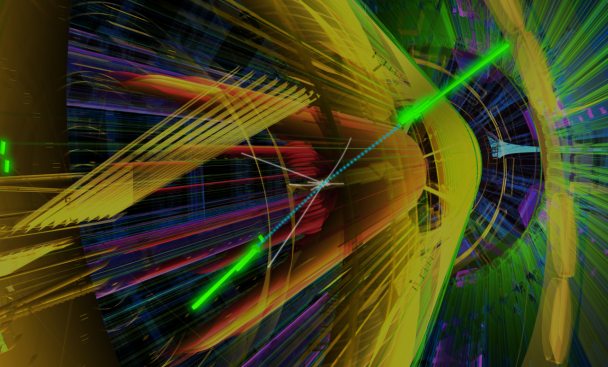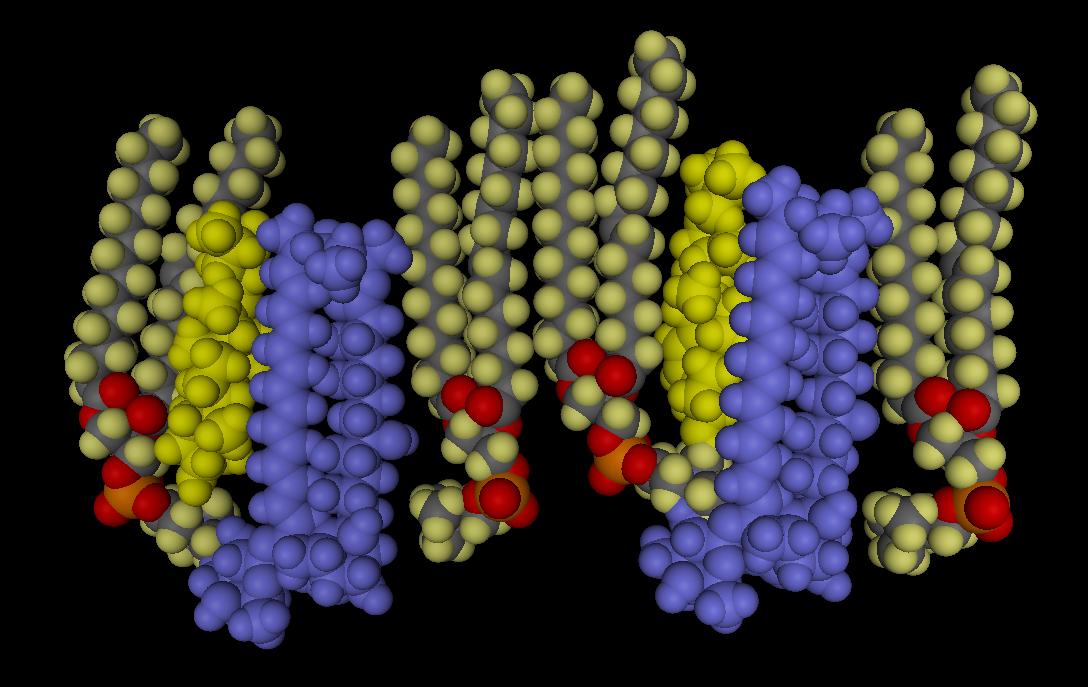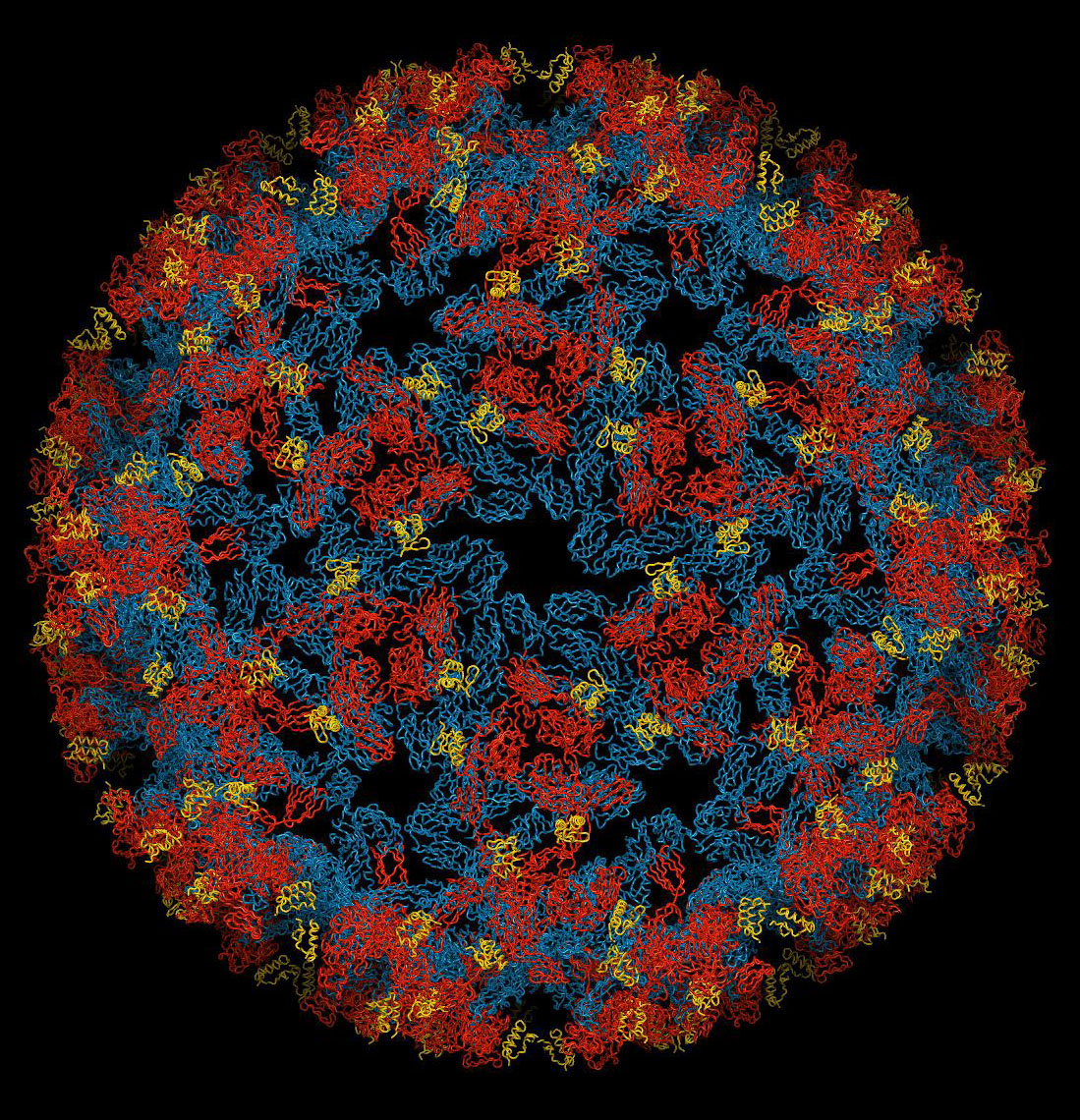Accelerators for Research and Development
Accelerators for Research and Development
Fundamental Physics
High Energy Physics
Everything is made of matter whose underlying structure is governed by basic laws. High Energy Physics (HEP), or Particle Physics, investigates the structure of matter at the most fundamental level by looking at the sub-atomic particles that make up atoms. One of the current goals in particle physics is to investigate the validity of the 'Standard Model’, which describes all known sub-atomic particles and their interactions.
HEP has been one of the major driving forces for the development of accelerator technology ever since the first particle accelerators were built about hundred years ago. Higher energy collisions are needed to observe more massive particles, meaning that accelerator scientists are constantly pushing the boundaries of accelerator technology. Much of what is known today about particle physics has been proven experimentally or discovered using particle accelerators (For more information, see the interactive ‘accelerator timeline’).
The discovery of the Higgs boson, one of the greatest scientific discoveries of this century, made use of a particle accelerator, the Large Hadron Collider (LHC) at CERN in Geneva. Even with the discovery of the Higgs boson, there are still many unanswered questions beyond the Standard Model such as the origin of dark matter and dark energy, the matter/antimatter asymmetry in the Universe and the unification of the electroweak and the strong forces and their further unification with gravity. These problems will drive the future of HEP and accelerator development, potentially leading to new accelerator facilities, even bigger, and more powerful than the LHC. As you will see throughout this website, the applications of accelerators reach far beyond fundamental physics research and these applications will also drive accelerator development.
|
Large Hadron Collider (LHC) located beneath the Franco-Swiss border near Geneva, Switzerland, built and operated by the European Organization for Nuclear Research (CERN). Image credit: CERN |
A two photon event from the ATLAS experiment at the LHC. The photons are indicated by the clusters of energy shown in green. Image credit: CERN-ATLAS |
For more information see;
Web: European Council for Nuclear Research (CERN)
LHC country websites: 







See also CERN videos
Web (Fermilab): Particle Physics Division
Nuclear Physics
Nuclear Physics focuses on the study of atomic nuclei – the heavy, dense cores of atoms. A nucleus is made up of protons and neutrons, which are in turn made up of quarks, held together by the strong nuclear force. Research in nuclear physics ranges from theoretical and simulation work to experiments involving particle accelerators or observational satellites.
Nuclear Physics research carried out at large particle accelerator facilities such as the Relativistic Heavy Ion Collider (RHIC) at the Brookhaven National Laboratory in New York or the Large Hadron Collider (LHC) at CERN in Geneva, carry out cutting edge research aimed at understanding how the interactions between fundamental particles in the nucleus result in the observable properties of the nucleus and how matter evolved into the composition of atomic elements that the world has today. Colliders, such as the two mentioned above, are also able to recreate, be it only for fractions of a second, the conditions of the universe shortly after the Big Bang by colliding heavy atomic nuclei such as those of lead, to help us gain a better understanding of the early evolution of the universe.
For more information see;
Web (CERN): ALICE, a journey to the beginning of the Universe
Web (RHIC): The Physics of RHIC
![]() Video: Breakthrough: RHIC Explores Matter at the Dawn of Time
Video: Breakthrough: RHIC Explores Matter at the Dawn of Time
2min30s
Web (GSI): FAIR- Facility for Antiproton and Ion Research [Under Construction]
Web: Spiral 2 at GANIL, Grand Accélérateur National d’Ions Lourds (National Large Heavy Ion Accelerator)
Materials Science
Materials science is today a field of great importance, both for fundamental and applied research. By gaining a deeper understanding of materials and by developing new materials, researchers in this field are helping to address a number of the important issues facing the world today. There are many applications of materials science using particle accelerators in areas such as biological research, drug development, treatment of flue gases and water, medical and nuclear waste, cancer research, developing medical and industrial materials, material identification, high temperature superconductor research, climate change research and alternative energy and fuel research such as solar cells, hydrogen fuel, fuel cells and biofuels.
|
Materials research: Photons and neutrons and even ions are essential tools used to study materials at the atomic level. In the example beside, scientists at ISIS used neutrons beams to uncover more about how the drug amphotericin works. Image credit: Dr DJ Barlow at Kings College London using ISIS Neutron facility, UK |
Particle accelerators play a key role in materials science research as a source of intense photon, neutron and ion beams enabling powerful diffraction and spectroscopy techniques used for the investigation of different types of material. The techniques used are described in more detail below.
Using synchrotron radiation
In 1947 researchers at the General Electric Research Laboratory (GERL) first observed synchrotron radiation, which is electromagnetic radiation emitted when charged particles are deflected by a magnetic field. At first, synchrotron radiation was seen as a nuisance as it caused the particles being accelerated in a circular accelerator to lose energy. However by the late 1950’s, researchers were beginning to realize the high potential of the use of synchrotron radiation for diffraction and spectroscopy, and by the 1960’s, accelerator facilities were being built for the sole purpose of producing synchrotron radiation, in different radiation wavelength ranges, for research. Today there are many synchrotron light sources around the world at which cutting edge research across many fields is being carried out.
For more information on synchrotron light sources see;
Web (lightsources.org): Collaboration between communicators from light source facilities around the world;
List of light sources of the world
Web: European Synchrotron Radiation Facility (ESRF)
Brochure (ESRF): A light for Science [English, Deutsch, Français, Italiano]
Below are two examples of the numerous practical applications of research carried out using accelerator generated synchrotron radiation in the X-ray wavelength region.
|
|
One example of such an application is the development of superabsorbent polymers, made by material scientists using accelerator generated X-rays, that are used to make more absorbent nappies to keep babies dry. Article [2011] (Symmetry Magazine): Accelerators help keep baby dry
|
|
|
Perhaps surprisingly, accelerators could have a role in improving the quality of chocolate. Researchers at the European Synchrotron Radiation Facility (ESRF) have studied the structure of chocolate using radiation generated by a particle accelerator, passing their findings onto chocolate manufactures to help them improve their product. Article [2011] (Symmetry Magazine): Chocolat à la particle accelerator |
Using neutrons
Neutrons are highly suitable for probing materials. Their properties allow them to penetrate deep into materials without destroying the material itself. The way in which neutrons scatter off the nuclei in gases, liquids and solids tells us about the structure of the material.
A powerful process to generate neutrons for use in neutron scattering and diffraction is that of neutron spallation. At neutron spallation facilities, intense accelerator beams of protons are made to hit a target leading to neutrons being expelled at high energies from the nuclei of the target atoms. The neutrons are then slowed down in a moderator material before being directed towards experiments. In Europe, there are a number of neutron spallation sources including the ISIS facility in the UK, the SINQ in Switzerland and, in the future, the ESS in Sweden.
For more information see;
Doc [2011] (IOP): Neutron scattering
Brochure [2012] (ISIS, STFC): Neutron Scattering: Materials research for modern life
![]() Video (ISIS, STFC): A video tour of the ISIS facility
Video (ISIS, STFC): A video tour of the ISIS facility
4min
Brochure [2010] (PSI): Neutrons for Research, The Spallation Neutron Source SINQ at the Paul Scherrer Institute
Web (PSI): LNS: Laboratory for Neutron Scattering at PSI
![]() Video (European Spallation Source): ESS Science for Society
Video (European Spallation Source): ESS Science for Society
5min53s
See also the case study: Using neutrons to make pictures
Using ions
At the JANNUS (Joint Accelerator for Nano-science and Nuclear Research) facility, which is spread across two sites in France, CEA Saclay and CSNSM Orsay, researchers are carrying out experiments where they study the effect of radiation on materials. Atomic nuclei are accelerated and used to bombard a target material with the aim to replicate the conditions in high radiation environments, such as within nuclear reactors. Research in this area can help scientists to select the materials that are best suited for the construction of the nuclear reactors of the future.
For more information see;
Web: The JANNUS platform: ion-beam simulation of materials irradiation
Solid State and Condensed Matter Physics
Condensed matter physics is the branch of physics that studies matter in different forms, ranging from everyday solids and liquids to the more exotic forms of matter such as superconducting materials and Bose-Einstein condensates. One of the most important tools in the study of solid materials is crystallography, a method by which the arrangement of atoms in a solid can be examined.
Crystallography, much like microscopy, uses electromagnetic radiation to view small objects. Where optical microscopy uses visible light, crystallography uses shorter wavelength radiation such as X-rays from synchrotron light sources (see ‘Using synchrotron radiation’ section above) or neutrons from spallation sources (see ‘Using neutrons’ section above).
Research in condensed matter physics and solid state physics has numerous applications in areas such as photo-voltaics, hydrogen fuel, superconductors and many more.
Biological and Chemical Science
Biological research
X-rays produced by synchrotron light sources (see ‘Using synchrotron radiation’ section above) have been used by biological researchers to shed light on various topics such as the structure of protein and the function of the brain, as well as many others.
|
Protein modelling: Synchrotron light allows scientists to solve the 3D structure of proteins e.g. the Chikungunya virus. Image credit: Voss et al., Nature (2010) 468, 709 (via Synchrotron Soleil, France) |
For more information see;
Article [2011] (Symmetry Magazine): Protein Structure
Article [2008] (University of California Santa Cruz): Physicists Shine Some Light on the Brain
Web (ESRF): Structural biology at ESRF (including video)
Drug development
Techniques such as X-ray crystallography, which use X-rays generated by particle accelerators (see ‘Using synchrotron radiation’ section above), can be used in the development of new drugs. A recent highly effective drug developed this way at SLAC National Accelerator Laboratory in the US was highly successful in treating malignant melanoma.
|
Multi-Billion Euro Industry: Drugs and medicines are big business and their development is important for the advancement of medical science. Image credit: e-magine art |
For more information see;
Article [2011] (SLAC): Light sources Help Discover New Drug Against Melanoma
Article [2008] (Nature): Application of X-ray crystallography in drug discovery







